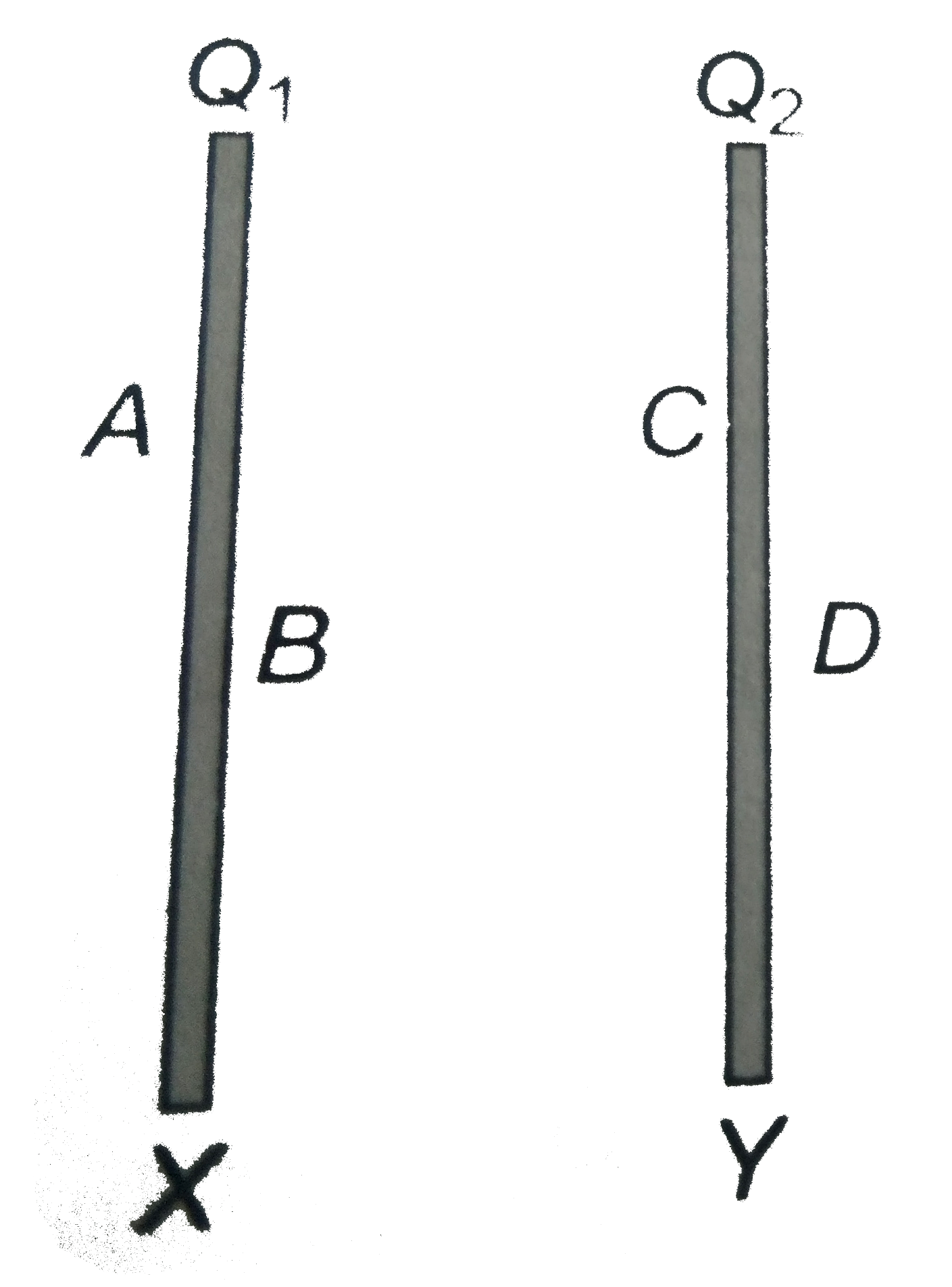Two large conducting sphere carrying charges Q1 and Q2 are brought close to each other. Is the magnitude of the electrostatic force between them exactly given by Q1Q2/4π∈0r2, where r is the distance between their centres ? Solution in Bengali
No, because Coulomb's law is applicable only for point charges. For large conductors, if the distance between the conductors becomes very large, then only their size may be neglected. Further the charges reside only on the surface of the conductor, so the charge distribution is not uniform.
Topper's Solved these Questions
- ELECTRIC FIELDBOOK - CHHAYA PUBLICATIONCHAPTER - ELECTRIC FIELDEXERCISE - NCERT EXEMPLAR QUESTIONS WITH ANSWER HINT
7 Videos
- ELECTRIC FIELDBOOK - CHHAYA PUBLICATIONCHAPTER - ELECTRIC FIELDEXERCISE - EXERCISE ( MULTIPLE CHOICE QUESTION )
33 Videos
- ELECTRIC FIELDBOOK - CHHAYA PUBLICATIONCHAPTER - ELECTRIC FIELDEXERCISE - HIGHER ORDER THINKING SKILL QUESTIONS
33 Videos
- ELECTRIC ENERGY AND POWERBOOK - CHHAYA PUBLICATIONCHAPTER - ELECTRIC ENERGY AND POWEREXERCISE - CBSE SCANNER
7 Videos
- ELECTRIC POTENTIAL BOOK - CHHAYA PUBLICATIONCHAPTER - ELECTRIC POTENTIAL EXERCISE - CBSE Scanner
13 Videos
Similar Questions
The electric flux through the surface

View SolutionWhich of the following statements is not true for Coloumb's law in electrostatics ?
View SolutionTwo charges, +qand−q are separated by a distance d. At which points will the resultant electric field intensity be directed parallel to the line joining the charges ?
View SolutionA light bulb is rated 100 W for 220 V ac supply of 50 Hz. Calculate
the resistance of the bulb ,
View SolutionA test charge q is moved without acceleration along the path from A to B from B to C in electric field E as shown in fig.

(i) Calculate the potential difference between A and C.
View SolutionTwo large conduction spheres carrying charges Q_(1) and Q_(2) are brought close to each other. Is the magnitude of the force between them exactly given by Q_(1)Q_(2)//4piepsilon_(0)r^(2) . Where r is the distance between their centers.
View SolutionTwo large , parallel conducting plates X and Y , kept close to each other , are given Q1 and Q2(Q1>Q2). The four surfaces of the plates are A,B,C and D , as shown

(i) The charge on A is 12(Q1+Q2)
(ii) The charge on B is 12(Q1−Q2)
(iii) The charge on C is 12(Q2−Q1)
(iv) The charge on D is 12(Q1+Q2)
View Solutionदो आवेशों q1 तथा q2 के बीच लगने वाला कूलॉम बल, F=q1q2r2 है। एक बल का मान -
View Solutionसावधानीपूर्वक उत्तर दीजिए
दो बड़े चालक गोले जिन पर आवेश Q1और Q2 है ,
एक -दूसरे के समीप लाए जाते है | क्या इनके बीच स्थिर वैद्युत बल का परिमाण तथ्यतः Q1Q24π∈0r2 द्वारा दर्शाया जाता है , जहाँ r इनके केन्द्रो के बीच की दुरी है ?
View SolutionDefine surface density of electric charge.
Two large conducting spheres carrying charges Q1 and Q2 are brought close to each other. Is the magnitude of the electrostatic force between them exactly given by Q1Q24πε0r2 where r is the distance betwen their centres?
View Solutionयदि दो आवेशों q1 व q2 जो एक - दूसरे से दूरी r पर स्थित है के बीच लगने वाला बल F निम्नलिखित सूत्र द्वारा दिया जाता है :
F=14πε0×q1q2r2
तो ε0 का विमीय सूत्र ज्ञात कीजिए।
View SolutionThe electrostatic force between two point charges q_(1) and q_(2) at separation r is given by F= k. (q_(1)q_(2))/(r^(2)) . The constant k
View SolutionIn the following question a statement of assertion (A) is followed by a statement of reason (R ) A : Two large conducting spheres carrying charges Q_(1) and Q_(2) are brought close to each other. The magnitude of electrostatic force between them is exactly given by Q_(1) Q_(2)// 4 pi epsilon_(0) r^(2) , where r is the distance between their centres. R: Here charges Q_(1) and Q_(2) can be assumed to be concentrated at the centres of their respective spheres.
View SolutionAnswer carefully:
(a) Two large conducting spheres carrying charges Q1 and Q2 are brought close to each other. Is the magnitude of electrostatic force between them exactly given by Q1,Q2/4πε0r2, where r is the distance between their centres?
(b) If Coulomb’s law involved 1/r3 dependence (instead of would Gauss’s law be still true ?
(c) A small test charge is released at rest at a point in an electrostatic field configuration. Will it travel along the field line passing through that point?
(d) What is the work done by the field of a nucleus in a complete circular orbit of the electron? What if the orbit is elliptical?
(e) We know that electric field is discontinuous across the surface of a charged conductor. Is electric potential also discontinuous there?
(f) What meaning would you give to the capacitance of a single conductor?
(g) Guess a possible reason why water has a much greater dielectric constant (= 80) than say, mica (= 6).
View SolutionThe electric force between two electric charges is given by F= (1)/(4pi epsi_(0))(q_(1)q_(2))/(r^(2)) . where is a distance . between charges q_(1) and q_(2) . So, unit and dimensional formula of epsi_(0) , is ...... and...... respectively.
View Solution
